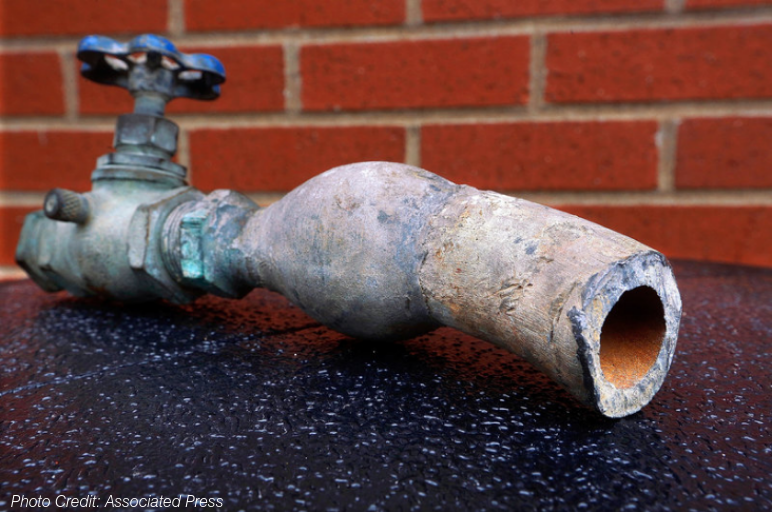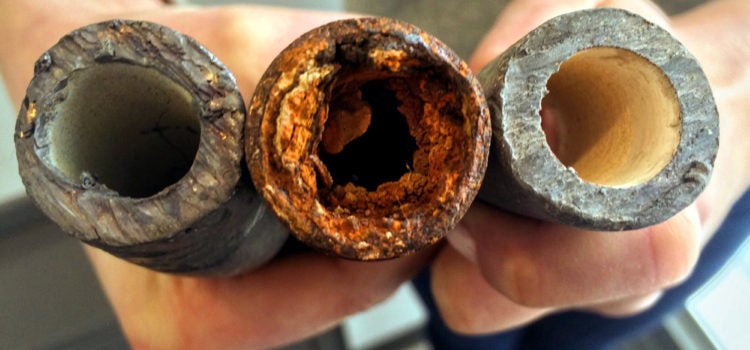Illinois poised to strictly limit partial lead service line replacement: How does it compare to Michigan and proposed EPA rules?
Tom Neltner, J.D., Chemicals Policy Director and Lindsay McCormick, Program Manager
Illinois is poised to be the second state in the country to strictly limit the practice of partially replacing lead service lines (LSL). Partially – rather than fully – replacing these lines that connect the drinking water main under the street to homes can significantly increase lead levels in drinking water for months and does not reliably reduce lead levels over time. Last week, the Illinois Department of Public Health (IDPH) released amendments to the Illinois Plumbing Code that include significant restrictions on partial LSL replacements. If the state’s legislative oversight committee for rulemaking does not object, the agency can finalize the rule.
If adopted, the changes would set the stage for all LSLs and galvanized service lines in the state to eventually be fully replaced. The changes are significant because the Illinois has an estimated 679,000 LSLs, by far the most in the country, as well as 60,000 galvanized service lines, and an additional 1.07 million service lines of unknown material that may be lead.
Michigan, with its estimated 460,000 LSLs, took a similar action in June 2018 when it strengthened its version of Environmental Protection Agency’s (EPA) Lead and Copper Rule (LCR). However, Michigan’s rule applies only to public water systems (PWS). In contrast, Illinois’s planned revisions apply to anyone who alters a service line including both PWSs and licensed plumbers.
In October, EPA proposed revisions to the LCR. However, unlike Michigan and Illinois, EPA’s proposed rule would continue to allow PWSs to conduct partial replacements where the property owner is unwilling or unable to pay the cost for the portion not owned by the PWS.
EPA’s proposal does include important conditions on how a public water system (PWS) must conduct partial – and full – replacements of LSLs and galvanized service lines. These conditions include providing advanced notice to customers and residents, giving customers an opportunity to pay for replacement, offering NSF/ANSI-53 certified filters to remove lead, and conducting follow-up sampling in 3 to 6 months.
Illinois’ proposed rule and Michigan’s final rule establish similar conditions, but, by strictly limiting partial replacement, are likely to more effectively protect consumers. Table 1 compares the requirements in each state with EPA’s proposed requirements.
Table 1: Comparison of Illinois, Michigan and EPA approaches to partial lead service line replacement| Requirement | Illinois Proposed Rule (Section 890.1150) | Michigan Final Rule (Section R 325.10604f) | EPA Proposed Rule (40 CFR §141.90) |
| What service line materials are affected? | Lead or galvanized steel material in any portion. | LSL and galvanized service lines.* | Most lead** and galvanized service lines.* |
| Who must comply? | Anyone modifying, repairing or replacing a service line. | Community water systems (CWS) and non-transient, non-community water systems. | Public water systems (PWS). |
| What must be replaced? | Lead and galvanized steel materials and all downstream portions. | Entire LSL or galvanized line controlled by system. | Lead pipe or fitting owned by PWS. |
| Who must pay for replacement? | Not defined. | Water system. | PWS only for portion it owns. |
| Any exceptions to limits on when partial replacement is allowed? | 1) Emergency repair allows 30-day delay. 2) Property owner signs a waiver after 30 days.*** | Emergency repair or building owner does not consent. | Not applicable. |
| What is an emergency? | Unscheduled repair to a damaged or leaking service line. | Not defined. | Not defined. |
| Is notice of partial or full replacement required? | Yes for partial replacement due to emergency repair. | Yes. 45 days for planned work. | 45 days for planned partial and 24 hours for full or emergency partial. |
| Who must be notified of replacement? | Building owner or operator.*** | Building owner or agent and residents served by line. | Owner/agent or non-owner residents. |
| Must NSF 53-certified filters be provided? | Yes, until line is fully replaced in cases of partial due to emergency repair. Exception if building owner waives and waiver submitted to IDPH. | No. | Yes, pitcher filter and three-month supply of filters after full or partial replacement. |
| Is any follow-up testing required? | No. | If partial replacement, sampling required within 72 hours. | Yes, within 3 to 6 months after full or partial replacement. |
| * If galvanized portion is or was connected to lead piping (Michigan) or LSL (EPA). ** EPA’s proposed definition of LSL does not cover all service lines with lead pipes. *** If property owner refuses full replacement, property owner must install and maintain NSF-53 filters for all fixtures used for drinking, food preparation, or making baby food until line is fully replaced. Waiver must be submitted to IDPH. |
|||
In conclusion, IDPH’s decision, if finalized, represents a substantial step forward to protecting Illinoisans from lead in drinking water, especially when complemented by other efforts the state has undertaken since 2018. Other states should consider Illinois as a model. They should also consider immediately adopting the important conditions on full or partial LSL replacement that EPA has proposed.












